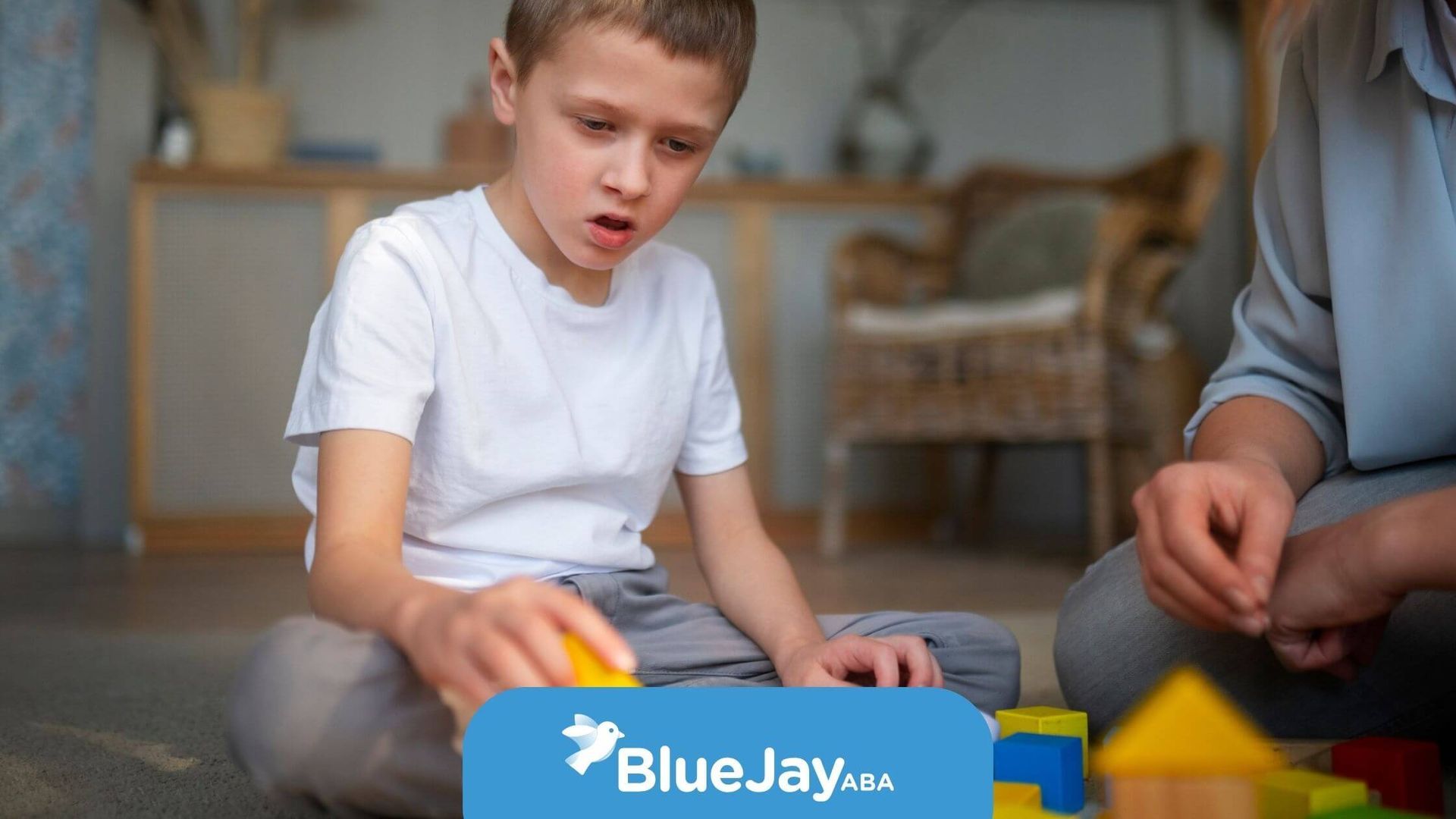Navigating Autism Treatments for Children: What Works Best
Autism Spectrum Disorder (ASD) is a complex neurodevelopmental condition that affects communication, behavior, and social skills. While there is no cure for autism, various treatments and therapies can help children with ASD develop essential skills and improve their quality of life.
This article explores the most effective treatments for autism in kids, including behavioral therapies, educational approaches, and medical interventions. It also highlights how Blue Jay ABA provides personalized support for families in North Carolina.
Understanding Autism Spectrum Disorder
Challenges in communication, social interaction, and repetitive behaviors characterize Autism Spectrum Disorder (ASD). Because every child with autism is unique, treatment plans must be tailored to meet their specific needs and strengths.
Why Early Intervention Matters
Research shows that early intervention during preschool years can significantly improve outcomes for children with autism by helping them develop critical social, communication, and behavioral skills. Early diagnosis allows families to access therapies that can minimize symptoms and maximize abilities.
Types of Treatment for Autism in Kids
There are various therapies and interventions available to support children with autism. These treatments aim to improve communication, social skills, behavior, and overall functioning. Below are the most commonly used approaches:
1. Behavior Therapy
Behavior therapy focuses on modifying behaviors through reinforcement strategies. Applied Behavior Analysis (ABA) is the most widely recognized behavioral therapy for autism.
Applied Behavior Analysis (ABA)
- What is ABA? ABA uses observation and positive reinforcement to teach social, motor, and verbal behaviors while managing challenging behaviors.
- Benefits: Long-term intensive therapy can improve life skills, intellectual abilities, and social interactions.
- Examples: Discrete Trial Training (DTT), Pivotal Response Treatment (PRT), Early Intensive Behavioral Intervention (EIBI).
2. Educational Therapies
Educational therapies are structured programs designed to improve communication and behavior in academic settings.
Examples of Educational Therapies
- TEACCH: Uses visual cues like picture cards to teach everyday skills.
- Early Start Denver Model (ESDM): Focuses on natural play-based activities to enhance communication and cognitive skills.
3. Speech–Language Pathology
Speech therapy helps children improve their verbal and nonverbal communication skills.
Benefits of Speech Therapy
- Enhances vocabulary, sentence structure, and speech rhythm.
- Helps children identify items or express feelings effectively.
4. Occupational Therapy
Occupational therapy focuses on teaching daily living skills such as dressing, eating, and personal hygiene.
Benefits of Occupational Therapy
- Improves fine motor skills needed for writing or using utensils.
- Helps children adapt to sensory challenges in their environment.
5. Physical Therapy
Physical therapy addresses movement difficulties by improving balance, coordination, and muscle strength.
Benefits of Physical Therapy
- Enhances physical activity participation.
- Reduces discomfort from poor posture or motor delays.
6. Sensory Integration Therapy
Sensory integration therapy helps children manage sensory processing difficulties by exposing them to sensory stimuli in a controlled way.
Tools Used in Sensory Integration Therapy
- Brushes, squeeze toys, trampolines.
7. Parent Management Training
Parent management training equips caregivers with strategies to support their child’s development at home.
Benefits of Parent Training
- Reinforces therapeutic techniques outside of sessions.
- Promotes consistency across environments.
8. Nutritional Therapy
While evidence supporting nutritional therapy is limited, some parents explore dietary changes to address food sensitivities or preferences common among children with autism.
Medication for Autism Symptoms
While no medication treats the core symptoms of autism directly, certain medications can help manage related issues such as irritability or anxiety.
FDA-Approved Medications for Autism
- Risperidone: Reduces aggression and irritability in children aged 5–16 years old.
- Aripiprazole: Helps manage irritability in children aged 6–17 years old.
Other Medications Used Off-Label
Selective serotonin reuptake inhibitors (SSRIs), anti-anxiety medications, or stimulants may be prescribed based on individual needs, but are not FDA-approved specifically for autism.
How Blue Jay ABA Can Help
At Blue Jay ABA in North Carolina, we provide personalized ABA therapy services tailored to each child’s unique needs. Here’s how we stand out:
1. Comprehensive Assessments
Our team conducts thorough evaluations to identify strengths and challenges before creating individualized treatment plans tailored specifically to your child’s needs.
2. Evidence-Based Practices
We use proven techniques like Applied Behavior Analysis (ABA) to teach essential life skills while reducing challenging behaviors through positive reinforcement strategies.
3. Family-Centered Approach
We believe that parents play a vital role in their child’s progress. Our parent training programs empower caregivers with tools they can use at home to reinforce therapeutic goals consistently across environments.
4. Flexible Service Options
Whether you prefer center-based therapy or in-home ABA therapy services tailored around family schedules—we’ve got you covered!
Conclusion: Empower Your Child’s Journey Today!
Helping kids with ASD thrive requires dedicated support both inside and outside clinic settings. Blue Jay ABA provides unparalleled expertise, empowering families across North Carolina every step of the way. We ensure brighter futures await those willing to take proactive measures and move early diagnosis intervention pathways forward!
Contact us today to schedule a consultation and embark on a transformative journey together!
Frequently Asked Questions (FAQs)
What is the best treatment for an autistic child?
The best treatment depends on the child’s individual needs but often includes a combination of therapies such as Applied Behavior Analysis (ABA), speech-language pathology, occupational therapy, educational programs like TEACCH or ESDM, and parent training programs.
Can autistic children live a normal life?
With early intervention and appropriate therapies tailored towards enhancing communication/social interaction alongside managing challenging behaviors—many individuals diagnosed under the ASD spectrum lead fulfilling lives, achieving milestones aligned with their potential!
How do you treat autism in a 2-year-old?
Early intervention techniques like EIBI combined with ESDM focus heavily upon naturalistic developmental behavioral interactions, fostering positive social exchanges and enhancing cognitive/language capabilities!
Can a child with autism be normal?
While ASD remains a lifelong condition, effective therapeutic interventions help minimize its impact, maximizing functional independence and quality of life overall.
Sources:
- https://www.nichd.nih.gov/health/topics/autism/conditioninfo/treatments
- https://effectivehealthcare.ahrq.gov/products/autism-update/consumer
- https://www.webmd.com/brain/autism/autism-therapies-aba-rdi-and-sensory-therapies
- https://autismsciencefoundation.org/treatment-options/
- https://www.helpguide.org/mental-health/autism/autism-treatments-therapies-interventions
- https://www.mayoclinic.org/diseases-conditions/autism-spectrum-disorder/diagnosis-treatment/drc-20352934
- https://pmc.ncbi.nlm.nih.gov/articles/PMC5044466/
- https://psychcentral.com/autism/aba-therapy
Related Posts






